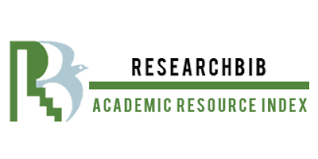APPLICATION AND FUTURE DEVELOPMENT OF OPTIMIZED SOLAR FURNACE CONCENTRATORS: THE IMPACT OF MATERIAL SELECTION ON EFFICIENCY
Keywords:
Solar concentrators, material selection, optimization, thermal efficiency, parabolic reflectors, PSO-GA, nanomaterials, automated tracking.Abstract
The efficiency of solar concentrator systems is crucial for maximizing solar thermal energy utilization. This paper explores the impact of material selection and optimization strategies on the performance of solar concentrators. Various materials, including aluminum alloys, silver-coated mirrors, and polymer reflectors, are analyzed based on their reflectivity, thermal stability, and durability. Mathematical models for geometric concentration ratio and thermal efficiency are presented to assess system performance. Experimental studies demonstrate that optimized concentrators with advanced material coatings and computational optimization methods, such as genetic algorithms (GA) and particle swarm optimization (PSO), achieve efficiency improvements of up to 95%. Future advancements in nanomaterials and automated sun-tracking systems are also discussed as potential breakthroughs in solar concentrator technology.
References
[1] Kalogirou, S. A. (2004). Solar thermal collectors and applications. Progress in Energy and Combustion Science, 30(3), 231-295.
[2] Duffie, J. A., & Beckman, W. A. (2013). Solar Engineering of Thermal Processes. John Wiley & Sons.
[3] Rabl, A. (1985). Active Solar Collectors and Their Applications. Oxford University Press.
[4] Mills, D. R. (2004). Advances in solar thermal electricity technology. Solar Energy, 76(1-3), 19-31.
[5] Winston, R., & Welford, W. T. (1978). Nonimaging Optics. Academic Press.
[6] Zhang, H., Baeyens, J., Degrève, J., & Cacères, G. (2013). Concentrated solar power plants: Review and design methodology. Renewable and Sustainable Energy Reviews, 22, 466-481.







